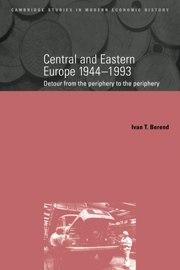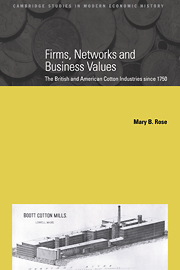7 results in Cambridge Studies in Modern Economic History

Productivity and Performance in the Paper Industry
- Labour, Capital and Technology in Britain and America, 1860–1914
-
- Published online:
- 16 March 2010
- Print publication:
- 27 March 1997

An Economic History of the Silk Industry, 1830–1930
-
- Published online:
- 29 January 2010
- Print publication:
- 01 May 1997

Spanish Agriculture
- The Long Siesta, 1765–1965
-
- Published online:
- 04 December 2009
- Print publication:
- 01 February 1996

Democratic Socialism and Economic Policy
- The Attlee Years, 1945–1951
-
- Published online:
- 09 November 2009
- Print publication:
- 13 November 1996

Central and Eastern Europe, 1944–1993
- Detour from the Periphery to the Periphery
-
- Published online:
- 28 October 2009
- Print publication:
- 29 August 1996

Firms, Networks and Business Values
- The British and American Cotton Industries since 1750
-
- Published online:
- 12 September 2009
- Print publication:
- 30 November 2000

Grain Markets in Europe, 1500–1900
- Integration and Deregulation
-
- Published online:
- 10 September 2009
- Print publication:
- 09 December 1999

